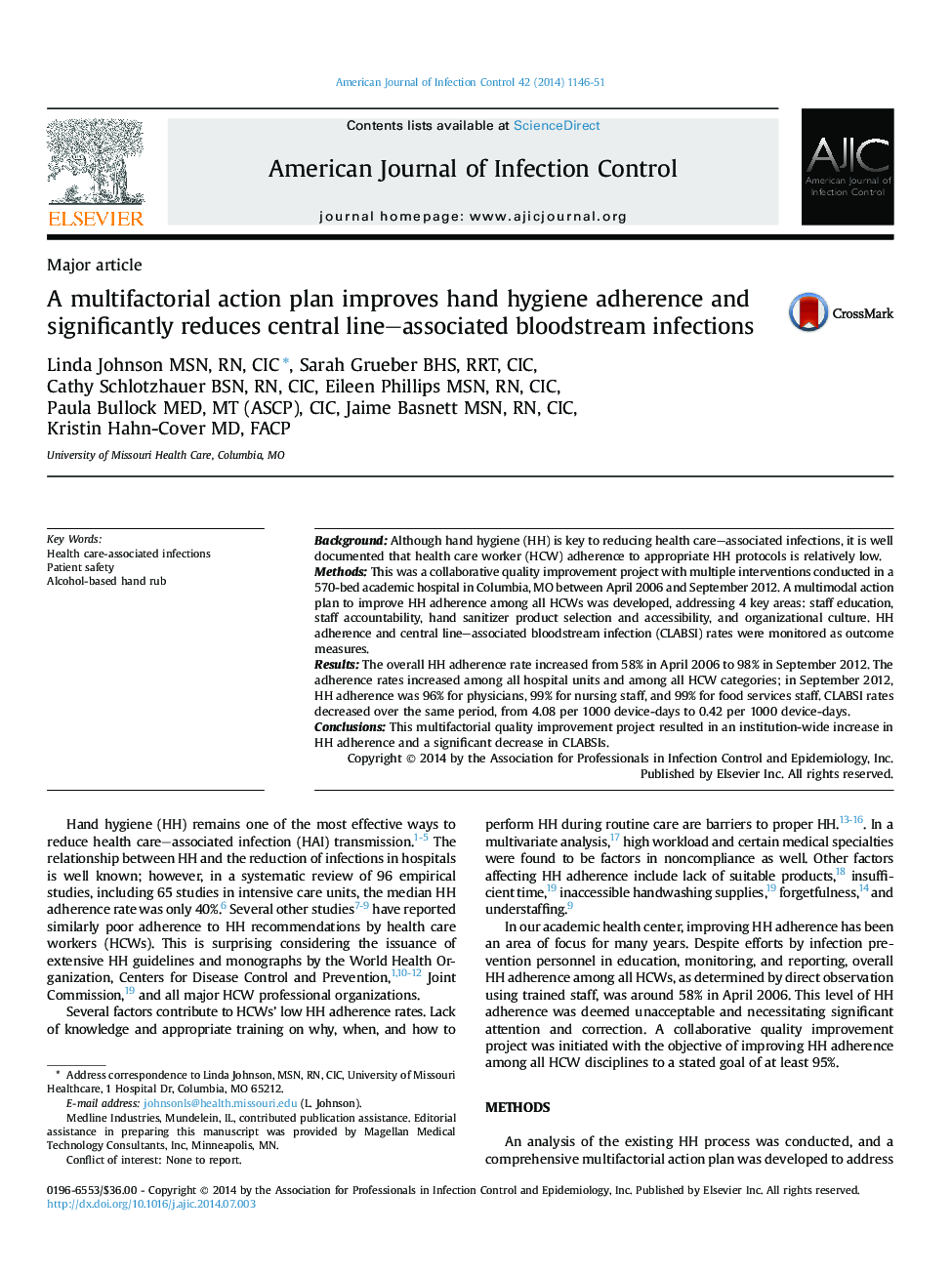| Article ID | Journal | Published Year | Pages | File Type |
|---|---|---|---|---|
| 2636804 | American Journal of Infection Control | 2014 | 6 Pages |
BackgroundAlthough hand hygiene (HH) is key to reducing health care–associated infections, it is well documented that health care worker (HCW) adherence to appropriate HH protocols is relatively low.MethodsThis was a collaborative quality improvement project with multiple interventions conducted in a 570-bed academic hospital in Columbia, MO between April 2006 and September 2012. A multimodal action plan to improve HH adherence among all HCWs was developed, addressing 4 key areas: staff education, staff accountability, hand sanitizer product selection and accessibility, and organizational culture. HH adherence and central line–associated bloodstream infection (CLABSI) rates were monitored as outcome measures.ResultsThe overall HH adherence rate increased from 58% in April 2006 to 98% in September 2012. The adherence rates increased among all hospital units and among all HCW categories; in September 2012, HH adherence was 96% for physicians, 99% for nursing staff, and 99% for food services staff. CLABSI rates decreased over the same period, from 4.08 per 1000 device-days to 0.42 per 1000 device-days.ConclusionsThis multifactorial quality improvement project resulted in an institution-wide increase in HH adherence and a significant decrease in CLABSIs.
